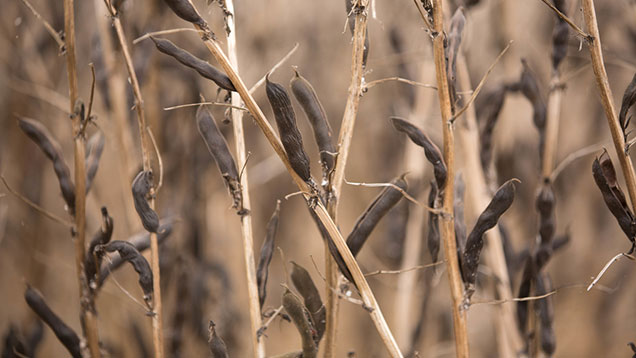Pod sealant provides ‘consistent yield increase’ in pulse crops
 © Tim Scrivener
© Tim Scrivener Pulse growers are advised to use a pod sealant product on combining pea and field bean crops ahead of harvest to prevent costly yield losses.
Pod sealants work by coating pods with a thin film of polymer, holding brittle pods together to prevent shatter, ensuring more seed makes it into the combine during harvesting.
Processors and Growers Research Organisation (PGRO) trials have shown consistent yield increases when using the pod sealant, Pod-Stik. Other example pod sealant products include Iskay and Arrest.
These increases have been close to 600kg/ha in beans and 400kg/ha in peas, depending on crop condition and efficiency of application, with spray timing critical.
See also: UK pulse market ‘can double in five years’
Spray nozzle choice has also been shown to have a significant effect on efficacy, with penetration into the crop canopy crucial to ensure all pods are covered.
Kim Christo of Pod-Stik manufacturer De Sangosse says applications should be timed at growth stage 80 (ripening) and using a flat fan nozzle rather than an angled nozzle is preferable, particularly on peas.
“Trials have identified that losses can be dramatically reduced when switching to flat fan, rather than angled nozzles before applying pod sealants, particularly on peas because of the greater quantity of biomass,” says Mr Christo.
Pod sealants can be applied alone or with a desiccant spray such as glyphosate or diquat, but in all cases it is crucial that sprayer lines and nozzles are flushed with clean water to avoid blockages after use.
Pod sealant usage rates, water volumes and nozzle types when applied to combining peas
|
Application rate |
Water volume (litres/ha) |
Nozzle type |
Yield (t/ha) |
% change versus control |
|
Control |
n/a | n/a |
5.17 |
n/a |
|
Pod-Stik |
150 |
Flat fan |
6.45 |
24.8 |
|
Pod-Stik |
150 |
Angled |
5.63 |
8.9 |
|
Pod-Stik |
250 |
Flat fan |
6.52 |
26.1 |
|
Pod-Stik |
250 |
Angled |
5.58 |
7.9 |
(Source: PGRO trials, 2014) *note that 250 litres/ha water volume complies with diquat label

